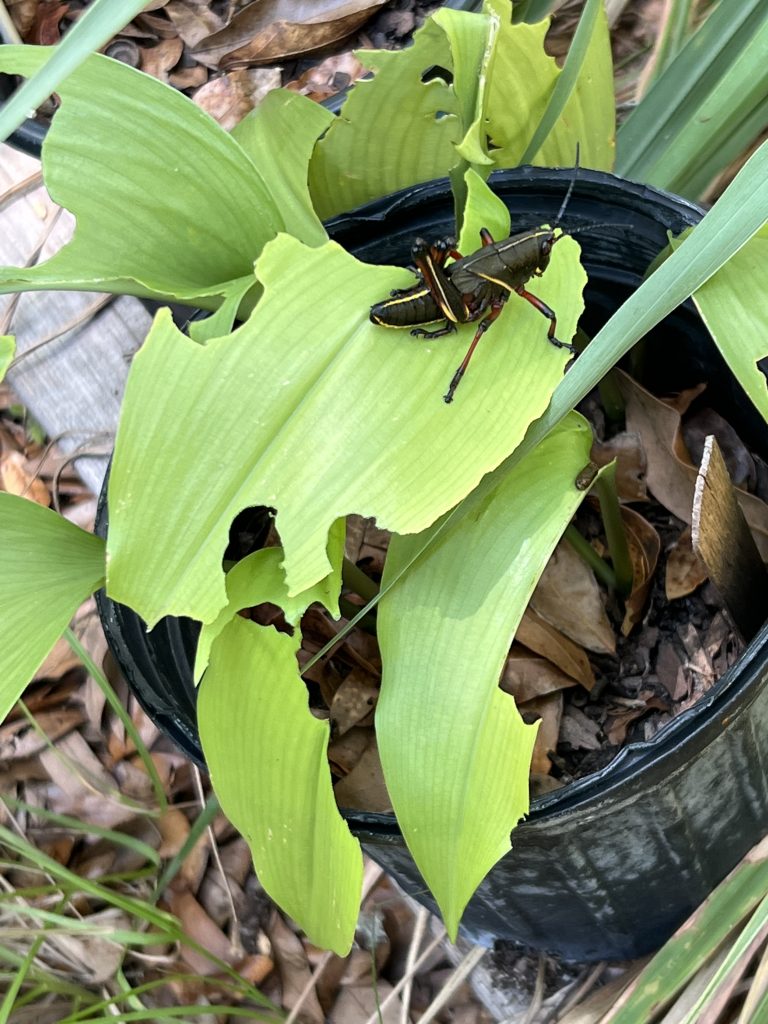Eastern lubber grasshoppers are out in force throughout the Southeast, including some parts of Florida. They’re munching on landscape plants, citrus and vegetable crops, while gardeners and growers are trying to minimize the damage.

These insects can be found from March to April to about October to November in North Florida and the state’s Gulf Coast. They can be economically important throughout Florida.
University of Florida Institute of Food and Agricultural Sciences (UF/IFAS) entomology professor Norm Leppla provides tips on how gardeners can manage the grasshopper.
“I suggest wearing gloves, removing the grasshoppers and dropping them into a soap solution in a bucket,” he said. “Place the drowned grasshoppers in a plastic bag and throw them in a garbage can for pickup. Insecticide sprays usually are not needed or effective.”
Leppla also said the late UF/IFAS entomology professor John Capinera suggested a bait, which Leppla said works.
Natural Enemies
Fortunately, these insects have lots of natural enemies, Leppla said. One of those predators is the loggerhead shrike, said Tia Silvasy, horticulture agent with UF/IFAS Extension in Hillsborough County.
But when they’re not eaten by predators, they munch on the tips or edges of leaves, Silvasy said. Eastern Lubber grasshoppers can completely strip foliage from plants. More commonly, though, they eat holes in vegetation and move onto another leaf or plant, UF/IFAS researchers say.
“If you’re going to use a chemical to manage them, spray early in their life cycle, when the grasshoppers are still immature, for best results,” Silvasy said. “As the grasshoppers grow into adults, they are more difficult to kill with chemicals. Look for insecticides containing the following active ingredients bifenthrin, cyhalothrin, permethrin, esfenvalerate and spinosad and apply as specified in the label.”
A few facts about these critters
- The grasshopper is well known because it’s so big, and it’s used a lot in biology classrooms for dissection.
- An Ask IFAS publication on the eastern lubber grasshopper describes it as “quite clumsy and slow” and travels by “walking feebly.” In fact, “lubber” comes from an old English word “lobre,” which means lazy or clumsy.
- When alarmed, lubbers spread their wings, hiss and secrete foul-smelling forth from their spiracles – external respiratory openings. Source: UF/IFAS









